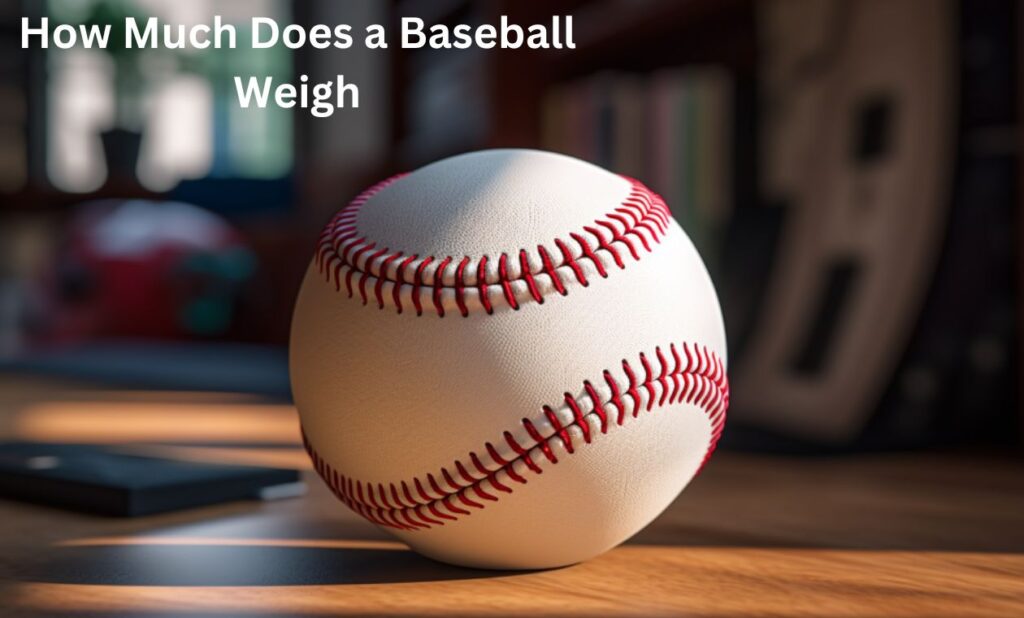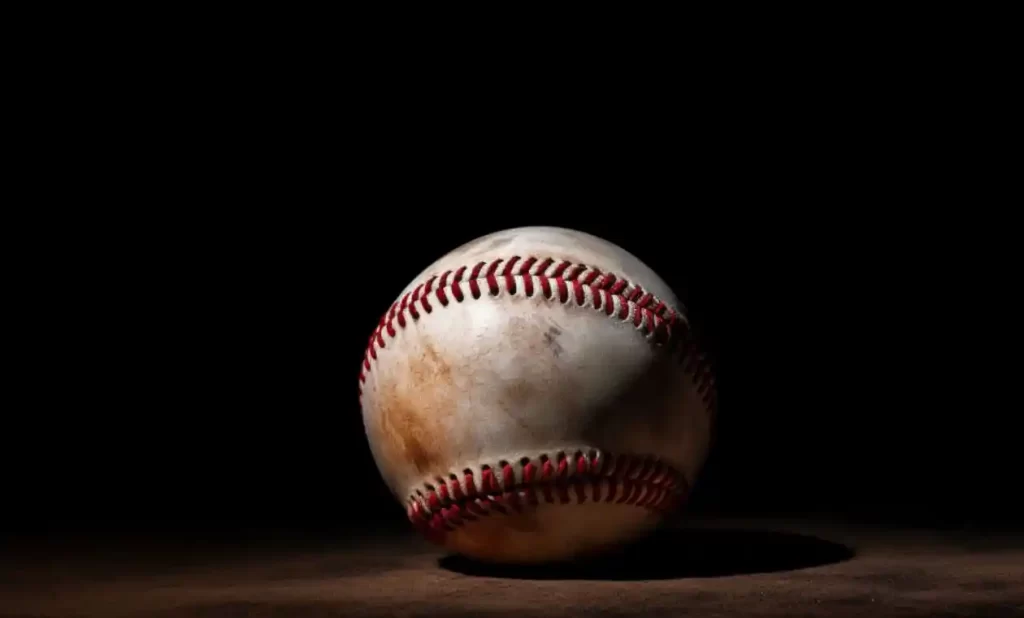
Baseball, often referred to as America’s favorite pastime, is a sport steeped in tradition and history.
Whether you’re a seasoned player, a dedicated fan, or just someone with a passing interest, you’ve probably pondered some of the game’s fundamental questions.
One such question that’s both intriguing and practical is, “How much does a baseball weigh?”
In this comprehensive guide, we’re embarking on a journey to unravel the mystery of baseball weight.
We’ll not only discover the standard weight of a baseball but also explore the variations, tolerances, and the significance of this seemingly simple aspect of the game. But that’s not all—our exploration goes beyond just the baseball itself.
We’ll delve into the weights of other baseball-related items, from caps to cards and bats. By the end of this guide, you’ll have a newfound appreciation for the role weight plays in the game of baseball.
So, whether you’re a player looking to fine-tune your game, a collector curious about the weight of baseball memorabilia, or simply a baseball enthusiast, join us as we uncover the fascinating world of baseball weight.
Let’s step up to the plate and begin our journey into the weighty matters of America’s beloved sport.
Read More: OPS in Baseball
How Much Does a Baseball Weigh?
Standard Baseball Weight
The weight of a baseball might seem like a straightforward matter, but it’s an essential element of the game. In standard baseball play, such as Major League Baseball (MLB), the weight of a baseball is regulated.
A regulation baseball typically weighs approximately 5 ounces (about 142 grams). This standard weight ensures consistency in the game, allowing pitchers to throw accurate pitches and batters to make precise hits.
Variations and Tolerance
While the standard weight is firmly established, there is some tolerance allowed for minor variations. Baseballs used in different leagues or levels of play may vary slightly in weight due to manufacturing differences.
However, these variations are carefully controlled to maintain fairness and consistency in the game.
Measuring Baseball Weight
The weight of a baseball is typically measured with precision scales, ensuring that it meets the required standards.
This meticulous attention to detail is a testament to the sport’s commitment to fairness and accuracy.
The Weight of Baseball Gear
Now that we’ve explored the weight of a baseball, let’s turn our attention to the weights of other essential baseball gear.
How Much Does a Baseball Cap Weigh?
Baseball caps are iconic symbols of the sport. They not only provide shade for players but also make a fashion statement for fans.
On average, a standard baseball cap typically weighs around 3.5 to 4 ounces (about 99 to 113 grams), depending on the materials used and the design.
How Much Does a Baseball Card Weigh?
For collectors, baseball cards hold a special place. These pieces of memorabilia come in various sizes and materials, which can affect their weight.
On average, a typical baseball card usually weighs between 1 to 5 grams. The weight variation depends on factors like card thickness and whether it includes additional features, such as holograms or foil.
How Much Does a Baseball Bat Weigh?
A baseball bat’s weight is a crucial factor for players, as it directly impacts their swing and hitting power.
The weight of baseball bats can vary significantly, depending on factors like the material, length, and design. Wood bats, commonly used in the MLB, typically range from 31 to 34 ounces (about 878 to 964 grams).
In contrast, aluminum or alloy bats are often lighter, with weights ranging from 20 to 26 ounces (about 567 to 737 grams).
Also Read: Era in Baseball
Factors Affecting Baseball Weight
Material and Composition
Baseballs
The composition of a baseball plays a significant role in its weight. Traditional baseballs are constructed with a core made of cork and rubber, wrapped in several layers of yarn, and covered with leather.
The density of these materials impacts the ball’s weight. Leather covers are carefully stitched to ensure durability and maintain the ball’s weight within the standard range.
Baseball Bats
Baseball bats come in various materials, each with its weight characteristics:
- Wooden Bats: Wooden bats, often made from maple, ash, or birch, offer a classic feel and are favored by many professional players. The choice of wood affects the bat’s weight, with some players preferring denser woods for power hitting.
- Aluminum or Alloy Bats: These bats are lightweight and offer greater swing speed. They are popular among amateur players and young athletes due to their ease of use.
Regulations and Standards
To ensure fairness and consistency in the game, baseball governing bodies have established strict regulations and standards for equipment, including weight:
- Major League Baseball (MLB): MLB specifies the weight of a regulation baseball at approximately 5 ounces. They also have rules regarding the weight and dimensions of bats used in professional play.
- Youth and Amateur Leagues: Youth and amateur baseball leagues may have different weight standards for baseballs and bats, catering to the needs and safety of younger players.
By adhering to these regulations and standards, baseball maintains a level playing field where players can perform their best.
Read More: Facts about RBI in Baseball
In Crux
In our journey through the world of baseball weight, we’ve uncovered fascinating insights into a seemingly simple aspect of the game. From the standard weight of a baseball to the nuances of other baseball gear, we’ve explored how weight impacts the sport at various levels.
Baseball weight matters because it directly influences the gameplay, performance, and even the collectible value of baseball-related items. The regulation of baseball weight ensures fairness, consistency, and precision in the sport, allowing players to pitch, hit, and field with accuracy.
Whether you’re a player striving to fine-tune your skills, a collector curious about the weight of memorabilia, or simply a baseball enthusiast seeking to deepen your understanding of the game, we hope this guide has provided valuable insights.
As you step up to the plate, remember that baseball’s rich tradition encompasses more than just weight—it’s a sport that has captured the hearts of millions, and its history continues to be written with every pitch and swing.
Thank you for joining us on this weighty exploration of America’s favorite pastime. Keep your eyes on the game, and may your baseball experiences always be in perfect balance.
FAQs about How Much Does a Baseball Weigh
[sp_easyaccordion id=”730″]

Meet Daniel Anderson, the heart and soul behind Baseball Pro Picks. At 49, Daniel’s life has revolved around baseball, a passion that’s as strong today as it was when he first fell in love with the game. Living in the USA, Daniel has dedicated countless hours to watching, analyzing, and understanding every pitch, hit, and home run, making almost no game missed. His deep-rooted love for the sport is matched only by his commitment to sharing insightful, expert analysis with fellow baseball enthusiasts. With decades of experience and a keen eye for the game’s nuances, Daniel brings a unique perspective that enriches Baseball Pro Picks. Trust Daniel to guide you through the intricacies of baseball with the authority and trustworthiness of a true aficionado.












